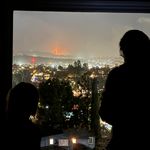
You know that thing in movies when the romantic lead’s mousey best friend takes off her glasses and shakes out her hair? My pet theory about MH370 had that kind of moment last week. For the better part of a year, friends and relatives crossed the street to avoid having to hear about my weird, long Malaysia Airlines hypothesis. When it came to pitching editors and producers, I couldn’t get arrested. Then, on February 23, New York ran my article “How Crazy Am I to Think I Actually Know Where That Malaysia Airlines Plane Is?” and by Tuesday the story was getting picked up around the world. Soon I was booked on CNN, MSNBC, CBS, Fox, and a bunch of international networks.
In 25 years of journalism, I’ve never had a story blow up like this. In one day, page views on my personal website went up tenfold, and my Kindle Single “The Plane That Wasn’t There” went from an Amazon ranking of 10,000 to 120. The biggest surprise wasn’t how many clicks the story was getting — I knew that a lot of people are interested in MH370 — but how positive the response was. I was expecting, frankly, to get roasted alive. Months ago, when I ran an early version of a part of my theory on my blog, it sparked a Reddit thread in which the typical comment was “I’m so furious I can’t even.”
This time, I guess, people were more willing to hear what I had to say — understandably. Come this Sunday, March 8, a year will have gone by without any debris washing ashore. For four months, high-tech ships have been scanning the seabed in vain. Something seems obviously fishy. The idea that a pretty outlandish set of circumstances might have led us to this place seems less hard to swallow. “A far-out theory from one of CNN’s chief commentators on the aviation disaster, science journalist Jeff Wise, has been circulated worldwide,” wrote News Corp Australia, “and has more credibility than you might think.”
Some of the feedback was out-and-out mean. RT, the Russian news outlet, suggested that I suffered from a mental affliction called “Putin Derangement Syndrome.” More surprisingly, the Independent Group, a loosely affiliated group of like-minded tech geeks that I’d been working with since March, kicked me out: A faction was outraged that I had published a hypothesis at odds with the IG’s “official” scenario put out in September. I don’t know why a person can’t recognize the potential viability of two contradictory hypotheses, but there you have it.
One of my goals in publishing my theory was to see if I couldn’t shake the tree and scare up some new sources of information. On that score, the results were promising. Among the people who emailed me were flight attendants, 777 captains, and even a test pilot who works for a major aircraft manufacturer. I was also contacted by people who have done extensive business in Russia and Ukraine, and who I hope might be able to help me get a better picture of the three ethnic Russians aboard the plane. A representative of the missing passenger’s families reached out to me as well, to reiterate that they are not willing to accept the death of their loved ones without more concrete evidence than has been provided thus far.
The most satisfying new data, however, came from someone I already knew: Indonesian aviation expert Gerry Soejatman, whom I’d gotten to know when we were both covering the AirAsia crash in December. After reading my article, Gerry decided to come forward with information that he had acquired while working on Inmarsat systems a few years prior. I’d always assumed that the Satellite Data Unit, which is located in the roof of the plane near the aft emergency exits and which would be crucial in perpetrating a spoof of the Inmarsat data — something that is central to my hypothesis — is not accessible in flight. Gerry wrote a fascinating blog post on his own website in which he pointed out that not only is the SDU accessible via an unlocked hatch, but that this hatch is located just aft of where the two Ukrainians were sitting. It would be relatively easy, Gerry writes, to feed false location data into the SDU from right in the cabin. I’d rate that a Wow!
The biggest question mark that I hoped would be resolved was the mystery of the strange dirt rectangle north of the Yubileyniy, the runway in Kazakhstan where my theory proposes that the plane landed. (In my story, there are satellite photos of the site.) There, unfortunately, I didn’t make any progress. One commenter said that something really urgent must have been going on to do that work when the ground is frozen; another said that in that kind of extreme climate it’s better to work in the cold than in the summer heat. I’m still not even 100 percent sure if the rectangle is a pit or a mound. If any readers know how to turn stereoscopic images into 3-D renderings, let me know! For the record, I remain completely agnostic as to whether it has anything to do with MH370 or not.
Of course, the real purpose of publishing the piece in New York was to prove to my wife that I hadn’t wasted the last eight months of my life on sheer folly. Once, she’d told me there was a 5 percent chance my theory was right; later, she’d revised that downward to zero percent. This afternoon, I asked her what she thought the odds were that the Russians really had taken the plane.
“I don’t know,” she said.
Which, I think, is actually the most reasonable answer.






























